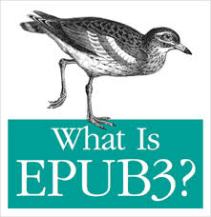Other Case Studies
Case Study
EPUB 3 – Features of the eBook Format:
There are many reasons that eReaders and eBooks are changing the publishing landscape. Just as an iPod makes it possible to tote an impossibly large music collection in your shirt pocket, eReaders allow you to carry an entire library of books in a handbag.
ePub has been widely adopted as the format for digital books (eBooks) – including Apple’s iBooks, Sony’s Reader, and the Kobo – and the ePub 3 specifications significantly increase the ePub format’s capabilities to support a wider range of publication requirements.
Features of the EPUB 3 Format
- Video. Video can now be embedded in eBooks.
- Audio. Audio passages can also be embedded in eBooks, and ePub 3 is better at integrating the current DAISY accessibility standards, making eReaders more useful to visually impaired readers.
- Interactivity. An interactive ePublication can act more like an app than a document, and can include features like pop-ups and asides activated by clicking on words in the text.
- Global language support, including vertical writing and writing from left-to-right and right-to-left.
- Multi-column layout. A feature that will greatly enhance publications like cookbooks (see the post on Mastering the Art of French Cooking.)
- Hyphenation. To help page formatting, particularly in justified text, this helps avoid very tight or very loose lines of text.
- Embedded fonts. This opens up a world of possibilities for fonts you can use in your eBook.
- Enhanced metadata. Metadata (i.e. “data about data”) in an eBook includes things such as your ISBN number, book title, author name, publisher, and publication date. Enhanced metadata can include information like author bios, book excerpts, and media reviews — the kind of information that might influence someone’s decision to buy your book.
- Improved accessibility. This includes enhanced navigation within the eBook, improving the reader’s ability to jump to specific chapters, pages, and passages.
- Support for MathML, a mathematic specification that provides greater opportunities for textbook publishers to convert and publish texts as eBooks.
